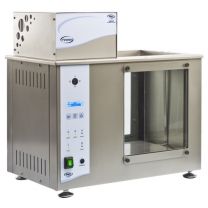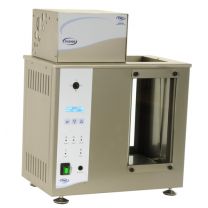ASTM D2170
The ASTM D2170 and ISO 12595 test methods specify a procedure for the determination of the kinematic viscosity of liquid asphalts (bitumens), road oils and distillation residues of liquid asphalts (bitumens) all at 60°C (140°F) and of asphalt cements at 135°C (275°F) in the range from 6 to 100 000 mm²/s (cSt). Results of this test method can be used to calculate viscosity when the density of the test material at the test temperature is known or can be determined. The time is measured for a fixed volume of liquid to flow under gravity through the capillary of a calibrated viscometer under a reproducible driving head and at a closely controlled and known temperature inside a viscosity bath.





